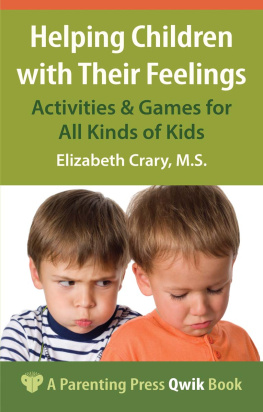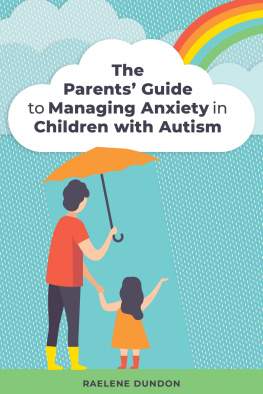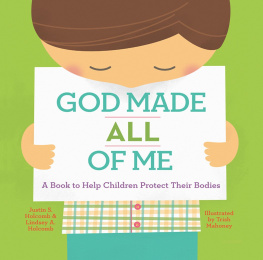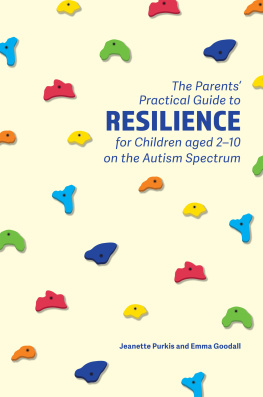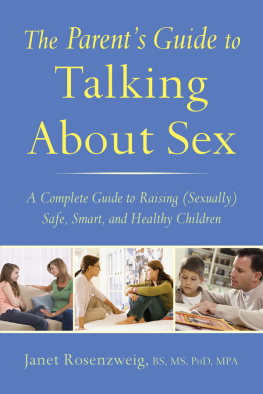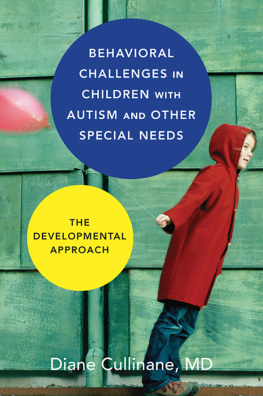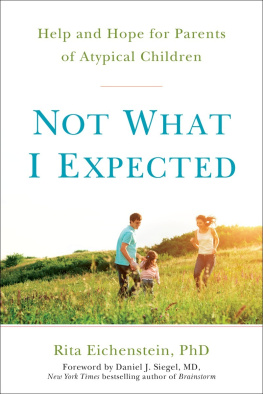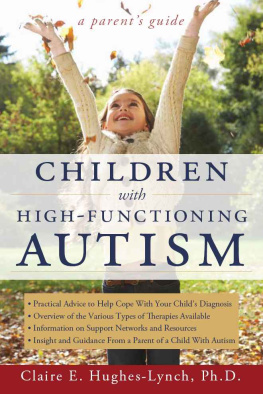
SAFETY and CONSENT
for KIDS and TEENS
with AUTISM or
SPECIAL NEEDS
A Parents Guide
DEBRA S. JACOBS

Jessica Kingsley Publishers
London and Philadelphia
Contents
Notes on the text
This book uses female pronouns when describing victims of coercion. This has been done for the sake of continuity and by no means intends to exclude male victims of sexual molestation or abuse of any kind. Although the male pronoun is used for the perpetrator of abuse, this by no means excludes the fact that women are also perpetrators of abuse and molestation as well.
In addition to being a valuable resource for parents, this book is appropriate for use by the layperson and professional alike. I encourage the addition of this book into the course work of education professionals, clergy, coaches, and anyone else who will be working with children with any variation of ability.
CHAPTER 1
Introduction
All children must be kept safe from molestation and abuse. Children with special needs are exceptionally vulnerable, with statistics reporting them to be three times as likely to be molested as their typically developing peers; exceptional preventive measures therefore need to be taken to keep them safe.
The United Nations (UN) Convention on the Rights of the Child (1989) states that children with special needs have all the rights of their typically developing peers as members of the human family. This international document clearly states that it must be a priority of all countries that children are provided with a safe environment and education so that they are able to reach their fullest potential.
The rights of children with special needs are specifically delineated within the UN Convention, and the inference of this demarcation is that children with special needs must have the appropriate education, care, and environment to reach their highest possible levels of function and social engagement.
The current educational emphasis is on inclusion, encouraging children with special needs to develop social relationships with typically developing peers and learning appropriate behavior, and in my experience when working with children, I have seen wonderful relationships flourish as a result of this inclusive practice. I have also witnessed children with special needs who desperately crave the attention and acceptance of other students behaving in attention-seeking and often outrageous ways to garner that attention for example, the student with special needs who witnesses her typical peer secretly passing a note, or in older grades, furtively kissing or touching another student in a quiet place in the library. She witnesses these behaviors and may come to the conclusion that this is an appropriate way to act because the typical students are engaged in this activity. She does not have the skill or the sophistication to discern that not everything her typical peers do is acceptable or appropriate nor should be imitated.
At times, the world we live in is a threatening and dangerous place. Children with special needs are particularly vulnerable to adults and other children who do not always have good intentions, all too often becoming victims of abuse and molestation, or they may even be coerced to commit crimes. Children with special needs may participate in behaviors they do not fully understand, convinced to do these acts on the promise of treats, fun times, or help for their families, or simply in the name of friendship. In other instances they may be threatened if they do not comply with a stronger child or adult, with threats against themselves or family members.
As an occupational therapist I have worked with hundreds of children over the years who have suffered from abuse and molestation. I felt it was important to share my expertise to help increase the awareness of this reality and decrease the numbers of children who suffer this fate. These pages provide techniques and ideas that can be incorporated into daily life and allow children to be protected as much as possible.
In this introductory chapter we look at how to prevent the molestation or abuse of children with special needs, including identifying some behavioral signs to look out for, and how to be proactive in stopping the molestation/abuse.
Preventing the molestation of children with special needs
While it is the ultimate responsibility of adults to keep all children safe, we also want children to be as independent as possible. Herein lies the dilemma. We simply cannot keep our eyes on our children 100 percent of the time, and so we must teach them appropriate behaviors. It is vitally important, for example, that children with special needs, no matter their ability to communicate, learn and become competent in the skill of self-advocacy to the highest degree possible. Many children with cognitive challenges or with autism spectrum disorders (ASD) have little or no language to express their thoughts or feelings. Other children may be hyper-verbal, but their comprehension or expressive skills are limited and not equivalent with their verbal skills.
We cannot assume that everyone in our family or in the schools or programs our child attends has her best interests at heart. Further, we cannot assume that if something untoward does happen, that she will be able to communicate that experience. It is especially important to develop alternative communication methods for the non-verbal child. In addition to programming an assistive technology/augmented communication device to help a child ask for a snack or to greet a family member, it is also important that all body parts are named, including the parts we consider private.
Very young children who may be typically developing or who have a special need do not understand the concept of germs, viruses, or bacteria, and do not comprehend that the spread of these things can make us sick. However, we spend a great deal of time reinforcing good hand washing practice. So, too, must we teach our children about the private nature of their genitalia, with the same amount of reinforcement accomplished by frequent education and calm, natural discussion. Put aside any resistance you may have about discussing specific genitalia and potentially harmful experiences your child may encounter. Helping your child to understand her body and when and how she should be treated can go a long way to keep her safe.
Normalizing the use of accurate words for genitalia, such as vagina and penis, are important to teaching children to protect themselves and, if need be, to accurately report molestation. Children who use augmentative communication devices have a section that contains body partsjust as we teach our children nose and eye, so, too, must we teach them vagina and penis. This education needs to continue, reinforcing the concept of private and appropriate touching. Giving a non-verbal child the ability to thwart unwanted and inappropriate interactions by others helps to keep her safe. In addition, giving her the tools to report any and all experiences can help you to understand what your child experiences in school or elsewhere.
Children with special needs must learn that just because a typical peer is behaving in a certain way, this is not always the correct way to be. With calm and clear repetition, most children can understand these subtleties. Helping a child to develop a sense of empowerment so that she can make her own decisions about what is right for her is also part of keeping her safe. Children with special needs require specific learning methods and accommodations so they may internalize the information and incorporate new and safe behaviors into their personal repertoires.
Next page


